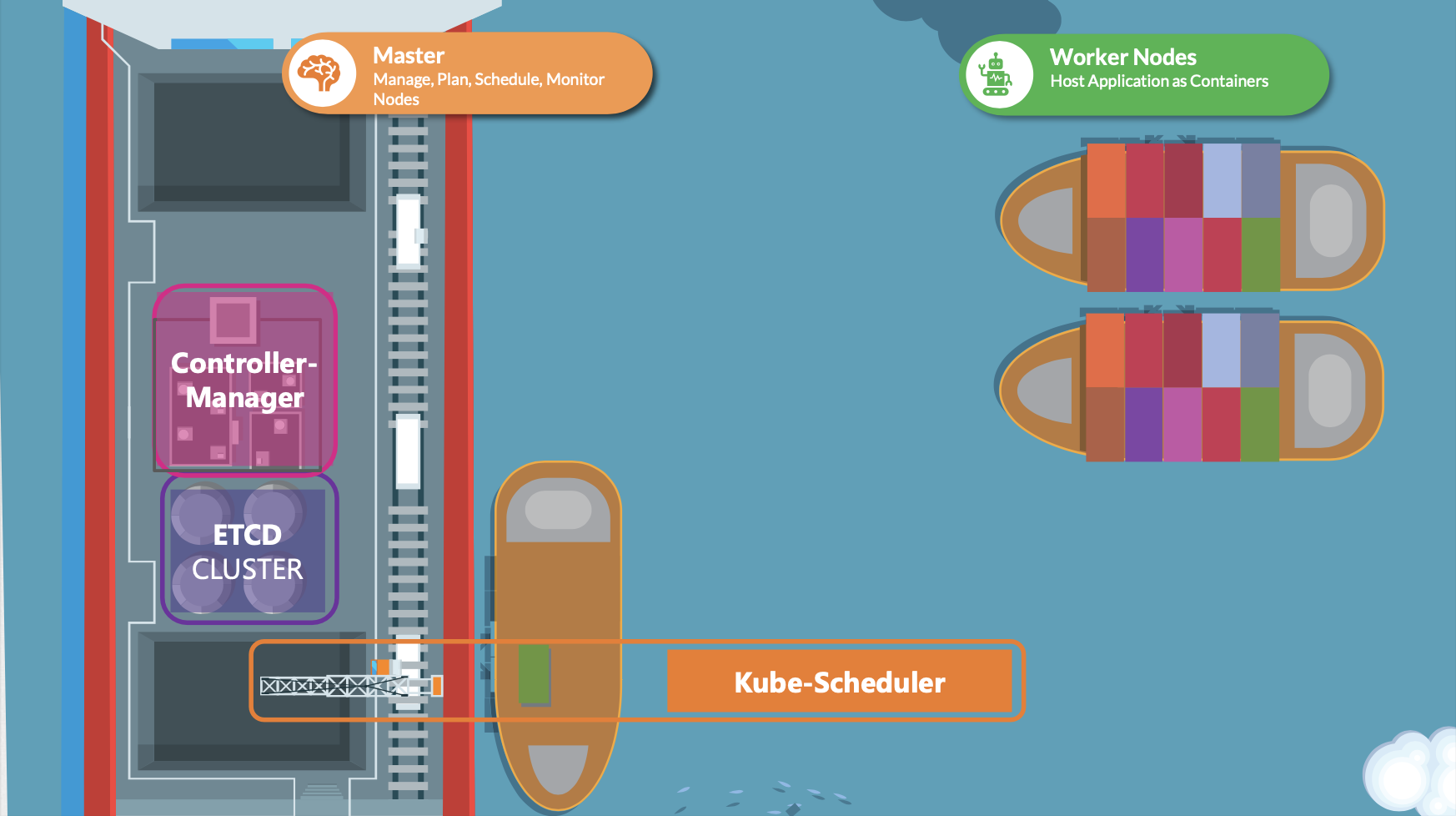ETCD in Kubernetes
 Varish Ansari
Varish AnsariUnderstanding etcd in Kubernetes

Source: KodeCloud
What is etcd?
etcd is a distributed, consistent key-value store used as the primary data store for Kubernetes. It stores all cluster configuration data, including the state of nodes, Pods, Deployments, ConfigMaps, Secrets, and other cluster-related objects. It ensures that data is consistent and highly available across the cluster.
Developed by: CoreOS (now part of Red Hat)
Uses: Written in Go and uses the Raft consensus algorithm for distributed consistency.
Why is etcd Important in Kubernetes?
Kubernetes is a distributed system, and etcd acts as the brain of the cluster by storing all its state information. Without etcd, Kubernetes cannot keep track of workloads, nodes, or configurations.
How etcd Works in Kubernetes?
Kubernetes components interact with etcd
The Kubernetes API Server is the only component that directly interacts with
etcd.Other components like the Scheduler, Controller Manager, and Kubelet communicate with the API Server, which then updates
etcd.
Data is stored as key-value pairs
Example:
/registry/pods/default/my-pod /registry/services/default/my-service /registry/nodes/ip-192-168-1-100Kubernetes resources (like Pods, Deployments, Services) are stored hierarchically.
Ensuring High Availability
A production-grade Kubernetes cluster runs multiple etcd nodes for fault tolerance.
If one
etcdnode fails, others in the cluster take over.
Use Cases of etcd in Kubernetes
Storing Cluster State:
etcd stores the desired and current state of Kubernetes resources.
Example: If a node crashes, Kubernetes can recover its state from etcd.
Leader Election:
Kubernetes controllers use etcd for leader election in HA (High Availability) setups.
Example: The Kubernetes Controller Manager ensures only one active leader at a time.
Configuration Management:
Stores configuration details, such as network policies, cluster secrets, and more.
Example:
ConfigMapsandSecretsare stored inetcd.
Service Discovery:
Helps Kubernetes keep track of available services and their endpoints.
Example: If a new Pod is added to a Service, the updated state is stored in
etcd.
Example to Remember etcd
Think of etcd like a distributed notebook for Kubernetes.
📒 Example Analogy:
Imagine Kubernetes is a library 🏛️
etcdis the library catalog system 📖Every book (Pod, Service, ConfigMap) is registered in
etcdIf a book is borrowed (a Pod crashes), the catalog (etcd) still keeps a record
A librarian (API Server) always checks
etcdbefore making decisions
Practical Example: How to Interact with etcd
You can interact with etcd using etcdctl, the command-line tool for etcd.
1. Checking the Cluster Health
ETCDCTL_API=3 etcdctl --endpoints=https://127.0.0.1:2379 endpoint health
Output:
https://127.0.0.1:2379 is healthy
2. Viewing Data Stored in etcd
ETCDCTL_API=3 etcdctl get /registry/pods --prefix --keys-only
Output:
/registry/pods/default/my-pod
/registry/pods/kube-system/coredns-12345
3. Writing a Key-Value Pair to etcd
ETCDCTL_API=3 etcdctl put "/config/app-name" "MyK8sApp"
To retrieve it:
ETCDCTL_API=3 etcdctl get "/config/app-name"
Output:
MyK8sApp
Best Practices for Managing etcd in Kubernetes
✔ Backup Regularly: etcd holds critical data; always take regular snapshots.
✔ Use High Availability (HA): Deploy etcd in a cluster with at least 3 nodes.
✔ Encrypt Data: Use TLS encryption to secure data in transit.
✔ Monitor etcd Performance: Use Prometheus to monitor latency and failures.
Conclusion
etcd is the heart of Kubernetes, ensuring cluster state consistency.
It acts as a highly available and consistent key-value store for all Kubernetes objects.
Kubernetes API Server is the only component that directly interacts with
etcd.Regular backups, encryption, and monitoring are essential for managing etcd.
Source: KodeCloud and ChatGPT
Subscribe to my newsletter
Read articles from Varish Ansari directly inside your inbox. Subscribe to the newsletter, and don't miss out.
Written by

Varish Ansari
Varish Ansari
As a DevOps and Cloud Engineer, I design and manage scalable AWS cloud infrastructures, implement Infrastructure as Code using Terraform, and automate CI/CD pipelines with GitHub Actions. I also work with Docker and Docker Swarm and ECS for containerized deployments, optimize cloud security using AWS WAF, Security Hub, and GuardDuty, and enhance monitoring and observability with CloudWatch, Prometheus, and Grafana. My focus is on automation, scalability, and security to ensure efficient and resilient cloud environments